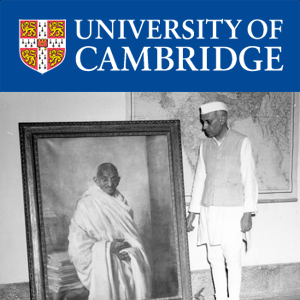Akanksha Mehta: Visual Narratives of `Fierce`Goddesses and `Brave` Women
Duration: 56 mins 38 secs

| Description: | Akanksha Mehta (SOAS): Visual Narratives of `Fierce`Goddesses and `Brave` Women |
|---|
| Created: | 2013-05-21 09:55 |
|---|---|
| Collection: | Exploring modern South Asian history with visual research methods |
| Publisher: | University of Cambridge |
| Copyright: | R.H. Rushworth |
| Language: | eng (English) |
| Keywords: | Akanksha Mehta; crassh; South Asian; history; visual research; |
| Abstract: | As a preamble to the first international conference on Exploring modern South Asian history with visual research methods, Cambridge, UK, 15-16 March 2013, the Centre of South Asian Studies is organising a seminar series that will introduce the theme of the conference. Several historians and anthropologists will discuss a selection of ethnographic / anthropological films of South Asia in relation to current historiographical methodologies. The series is organised in collaboration with the Royal Anthropological Institute and CRASSH.
Akanksha Mehta (SOAS) will present the second CSAS & RAI pre-conference seminar introducing the Exploring modern South Asian history with visual research methods conference. Akanksha will discuss 'Visual Narratives of "Fierce" Goddesses and "Brave" Women' and will show relevant visual records. Abstract The Hindu Nationalist Movement in India and the Indian Diaspora has gained significant political momentum in the last two decades, drawing within its ranks, women who are not only the embodiments of its patriarchal cultural nationalism, but who also simultaneously enforce its violent and exclusionary politics and contest `everyday` patriarchy. In this paper, based on field interviews with women in Hindu nationalist organizations and examination of primary materials of these organizations, I argue that women in Hindu nationalist organizations carve out an independent 'feminine' nationalist discourse using visual narratives. These visuals (digital images, sculpture, paintings etc.) invoke (and create) memories of past political violence and ethnic discrimination to construct the Muslim community as the 'other' who is rendering insecurity in the 'Hindu' nation. They then appropriate mythology and history and construct Hindu nationalist women as violent 'fierce' Hindu goddesses and brave historical warrior figures that 'secure' and 'save' the 'Hindu' nation from the 'evils' of the Muslim 'other.' The reproduction of these visuals narrative (on websites, publications, pamphlets, brochures as well as in offices, community centres, and homes) allows women in these organizations to legitimize everyday intimidation and political violence against the Muslim communities living in Hindu-majority areas of urban India. Furthermore, the symbolic dimension of these narratives allow Hindu nationalist women to carve their independent feminine space within a largely patriarchal movement, granting the women political access, social mobility, and a means to resist their domestic and "normative" femininity. Deconstructing the aforementioned visual narratives of security and insecurity built on mythology and history, I therefore, examine the role of visuals in the propagation of right-wing nationalist agendas and insist that agency and empowerment frameworks deployed in some feminist analysis of nationalist women are unable to capture the everyday resistance and politics of women in violent and patriarchal nationalisms. Image © Press Information Bureau, Government of India |
|---|---|

